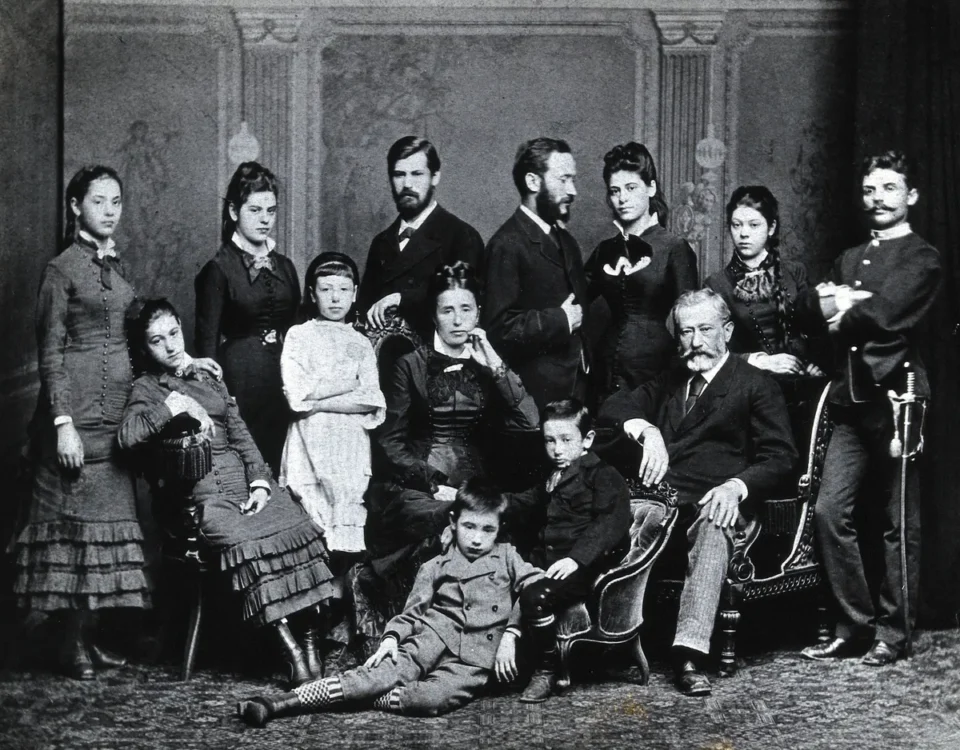
Residency Prep 101: Expert Tips for Interviews, Program Ranking, and Transition Planning
April 11, 2025
How to Secure Global Clinical Placements and Volunteering for Medical Students
April 11, 2025Summary (TL;DR)
It’s intellectually stimulating, financially rewarding (average salary 251k–349k), and allows doctors to care for women at all life stages, often treating both mother and fetus. However, it comes with challenges: high stress, long hours, frequent emergencies, ethical dilemmas, and malpractice lawsuit risks. Male OB/GYNs may face gender-based biases in this predominantly female field.
When working with teens, rapport-building is key. Understand their interests (e.g., TikTok trends, Netflix shows, pop culture), stay updated on slang and memes, and use open-ended questions to let them teach you about their world. Avoid forcing trendy phrases unless you’re confident, and always adapt your communication style to their comfort level.
Thinking About OB/GYN? Read This!
Can a career in OB/GYN be right for me? Am I ready to deliver babies or perform gynecological examinations every day?
Have you ever had any of these doubts? I’m pretty sure I know the answer. So, I’m more than happy to share with you the major pros and cons of pursuing OB/GYN as a career. Let’s begin!
Advantages
Obstetrics and gynaecology is an exclusive specialty that combines both the roles of physician and surgeon. For example, GPs may create a strong and long-term relationship with a patient, but they don’t carry out many operations; while orthopaedic surgeons can’t imagine their day without drills, hammers or chisels, but rarely see a patient after a few years. An OB/GYN can enjoy both: the opportunity to follow patients through the different stages of their lives and perform various surgical procedures such as dilation and curettage, pelvic laparoscopy, colposcopy, etc.
An OB/GYN meets women of different ages and from various backgrounds every day. Adolescents, pregnant women, grandmothers – all of them cross the door. This diversity enhances the doctor’s ability to understand and to be understood. Heavy bleeding, miscarriage, sexual assault or a loss of bladder control – aren’t topics to chat about openly and require a physician’s communication skills. Additionally, an OB/GYN can treat the same woman prior, during, and after her pregnancy or reproductive years, so there is an opportunity to develop rewarding relationships.
Another plus – the miracle of birth (very messy, though).
This specialty provides an intellectual challenge for your whole career. The OB/GYN cares for women in all stages of their lives and must master diverse abnormal conditions and physiological changes related to each phase. Constantly evolving prenatal genetic screening tests, minimally invasive surgery techniques, or cancer treatment choices are only the drops in the ocean. It’s obvious, but worth highlighting that the OB/GYN usually takes care not for one but two patients – mother and fetus.
The average OB/GYN salary range is typically between $251,601 and $349,001 in the United States.
Disadvantages
Stress, long hours, nights, or weekends on call are prevalent. A typical day often includes several deliveries, an ectopic pregnancy from the emergency room, constant beeps, and much more. Some would say – a lot of drama and a lot of blood. However, the most challenging part, especially in obstetrics, is life-or-death situations, requiring quick and professional acting. Unfortunately, OB/GYNs sometimes must share difficult news, such as cancer diagnosis or miscarriage.
OB/GYNs are one of the physicians most likely to be sued. Patients have high expectations and, of course, have a low tolerance for failure. However, some unfortunate outcomes are unavoidable. Malpractice lawsuit awards are one of the highest too. For example, a lawsuit involving complications that resulted in severe brain damage to the baby was awarded $229 million (later reduced to $205) in July 2019.
OB/GYNs face complex ethical issues every day. However, physicians should remain objective when treating women, even if they don’t support their decisions. Examples include birth control pills, abortion procedures, surrogacy, management of severe congenital anomalies, sex selection, etc.
You have to be ready for a lot of chaos in the schedule, expect the unexpected. Babies don’t have a calendar in the uterus, so they often decide to come to this world not as scheduled. Somehow, the middle of the night is their most favorite time.
If you are a male – be ready for patient’s refusals to be treated because of your gender or even questions such as “Why are you in a women’s field?” Male doctors are disappearing from gynecology. In 1970, 7% of gynecologists were women. Now 59% are.
Overall, OB/GYN is a very challenging but rewarding specialty. It includes the benefits of surgery and primary care. However, frequent emergencies and hectic work schedules aren’t suitable for everyone. So, think about that before choosing any specialty!

Hot Topics to Know About When Dealing with Teenage Patients
“So, it’s good to hear that you’re using contraception, but I also just wanted to let you know in case you weren’t already aware, that the pill will not protect you from STIs. If STIs are something you’re concerned about, condoms and other barrier contraceptives are the only things that can reduce your risk of getting an STI.” I paused, waiting for some acknowledgment that my teenage patient had taken in what I just said. “Do you have any questions about that?”
She replied “When?”
“I’m sorry, when what?” I foolishly asked.
“No, when’d I ask.” she snickered.
Time seemed to stop. My jaw was agape, my eyebrows were raised, my brain was trying to comprehend what my ears had just heard. I couldn’t believe I had been hit with a “when’d I ask” in a hospital setting, no less by a 16-year-old patient I had been asked to take a history from. It took me a second to recover, and I had no choice other than to laugh it off and try to resume the history with as much dignity as I could muster. At the end of the consult, I let her know the psychological trauma she had caused me: “Not gonna lie, you really had me there with the ‘when’d I ask’.” She giggled, and told me she had been dying to use that line on me since she overheard me use it on one of my friends as we were walking around the ward. Call it karma, I guess. But even though I had my dignity and pride stripped of me, I was glad, because that little moment established common-ground between us and eased some of the nervousness my patient was feeling in the hospital setting. Teenagers are notorious for being one of the hardest demographics to take a history from, so any common-ground you can establish can go a long way to building rapport and facilitating a smoother and more thorough history. As a 20-year-old MS3, I feel young/qualified enough to provide some insight into some of the topics I use to bond with my teenage patients, so here they are:
Whatever the teenager is into
Perhaps the most important tip of all is to simply find out what your patient is into. Learn something about their interests, or hobbies, or aspirations. When performing a HEADSSS assessment as part of your routine psychosocial history, pick up on little clues they may drop. If they play a sport like football or hockey, ask them about their favorite team. If they spend most of their time playing video games, ask them which ones. If one of your patients spends their day playing Among Us, ask them about their funniest experience as an impostor. It’s always best to identify exactly what your individual patient is into, rather than trying to bond with them over a TikTok dance you recently learned that they’re really not that interested in. However, if you’re ever met with a tight-lipped patient who won’t tell you what they like, it might be worth knowing some of the topics we’ll discuss today.
Stay up to date
When it comes to teenagers, staying up to date on the latest trends is almost as important as staying up to date on the best medical practices. Nothing hurts more than an out-of-date meme. I once saw a GP at the age of 20 who tried to bond with me by showing me their laptop background of the troll face meme back from 2009. I have not been back to see them since. Get up to date on your memes. 😡
TikTok
For those of you already on TikTok, well done! This tip isn’t for you. But for the rest of you, I feel confident saying most of you probably get your memes from Reddit. Those even more out-of-touch might get them from Instagram or even 🤮 Facebook. The truly hopeless might not browse memes at all. But I can safely say not a single person born after the year 2000 uses any of these – TikTok is undisputedly, unequivocally, the only app worth discussing when it comes to what the teens are using nowadays. I’ve gotten patients to open up about their entire life and worldviews by simply mentioning the name “d’Amelio”, or mentioning the latest song that’s big on TikTok. So it’s certainly worth downloading TikTok to find out a little bit more about the popular trends that your patient might be interested in. You never know, you might also get hooked on it too.
Other celebrities (mostly internet icons)
Yes, the first three items are all pop culture – but for good reason. Adolescents determine essentially their entire identity by exploring and identifying with particular cultural icons. So read up on celebrities, musicians, actors/actresses, the whole lot. Pay particular attention to recent scandals, because teenagers and people of all ages love to gossip about scandals. Once again, TikTok will help you out here because there is an endless supply of TikTok drama and scandals, and almost everyone has their own opinion on it.

Netflix
I admit I’m not up to date on these. I’ve had some success with Brooklyn 99 and Stranger Things, but even I can’t keep up with the newest, edgiest content that the teens are watching on Netflix nowadays. Essentially, it’s always worth asking what content your patient is binging, because if you’re familiar with it, a quick conversation about your patient’s favorite character or favorite moment can always help warm them up to you.
Key phrases
Gen Z (yes, technically some of us are Gen Z’s, but today’s 2000’s babies are almost an entirely different species of their own) is known for unapologetically decimating the English language. One of my part-time jobs is tutoring middle school and high school students, and honestly every lesson spent in a teenager’s presence makes me feel like I’m losing more and more control over the English language. Their lingo changes constantly, and every time I don’t understand what they mean when they say “finna” or “stan”, I get called a boomer. The key here is to Urban Dictionary whatever phrases you keep encountering. This is primarily so you can understand them. By no means do I mean you should also start using this lingo – it’s often better to not use these phrases if you’re not confident you can pull them off. There’s nothing worse for establishing rapport than a 28-year-old trying to come off as hip and cool by using slang they clearly don’t believe in or understand. So unless you’re sure you can unironically say “yikes” or “no cap” without being awkward, please do not try to use these phrases. Also, just as a side note, be very wary when they ask questions like “when” (see above for my painful experience with this question).
Don’t be afraid to ask
And finally, never be afraid to let the teen teach you. It’s a common tenet of medical school that the patient is the best teacher you will ever have, and this is no different. If you ever find out what kinds of interests your patients have but feel out of your depth discussing them, just ask them to explain those interests to you! I learn so much about interesting drama/activities/trends just by doing the thing with my eyebrows (🤨) and asking “What’s that? Tell me more about it.”

Topic FAQs
Take Your Medical Education to the Next Level with Physeo
Whether you're preparing for Step 1, Step 2, or striving to become a more confident and compassionate physician, Physeo is here to support your journey. Our resources are designed to help you master complex concepts, stay motivated, and achieve your goals.
📚 Unlock Premium Study Tools
Dive into our comprehensive video lessons, image mnemonics, and proven study plans tailored for success. Check out Our Plans to explore subscription options and find the perfect plan for your needs.
💡 Stay Inspired with Our Blog
Looking for tips on excelling in medical school, overcoming burnout, or balancing life as a student or professional? Check out our Blog. It’s your go-to resource for actionable advice and stories from fellow medical students and professionals.
📺 Boost Your Learning with Our YouTube Channel
Prefer learning through videos? Subscribe to our YouTube channel for free tutorials, step-by-step explanations, and expert insights to help you ace your exams and thrive in your medical career.
📱 Connect with Us on Social Media
Stay updated, inspired, and connected with Physeo across our social media platforms:
- Instagram: Follow us on Instagram for daily motivation, study tips, and behind-the-scenes content.
- Facebook: Join our community Here for updates, discussions, and support.
- LinkedIn: Connect with us professionally at LinkedIn for industry insights, career advice, and networking opportunities.
🚀 Ready to Excel?
Invest in yourself and your future patients by joining the Physeo community today. Let’s work together to create a generation of healthcare providers who lead with knowledge and compassion.
Start Your Journey NowAuthor
Deimantė Krutulytė and Richard Zhang
Content Creators
Latest articles
Our newsletter
- Work-Life Balance
- USMLE Prep
- Study Tools
- Stress Management
- Spaced Repetition
- Residency Applications
- Physeo
- Personal Growth
- Pathology Education
- OB/GYN Specialty
- Nutrition
- Neuroscience
- Mental Health
- Medical School Tips
- Healthcare Innovation
- Global Health
- Fitness & Wellness
- Faith & Medicine
- Doctor-Patient Relationships
- Creativity in Science
- Career Planning
- Anatomy Mastery











